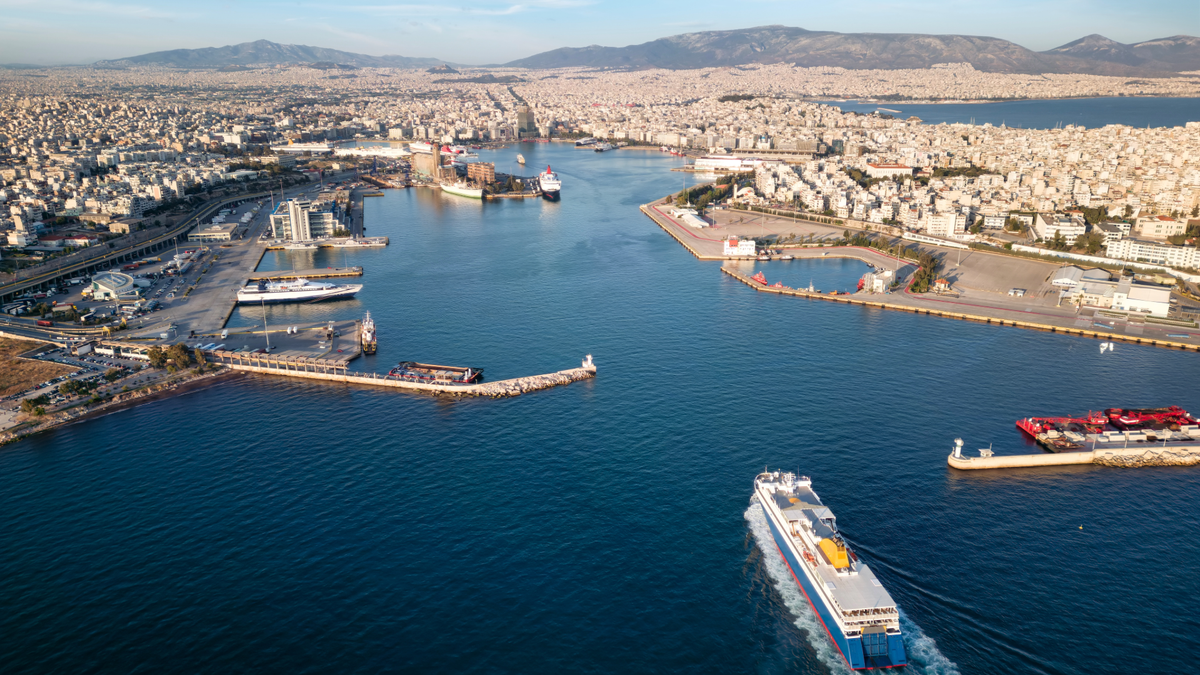Ferryhopper's Mediterranean Expansion Exposes EU Ferry Market Fragmentation

Greek booking platform's cross-border growth tests regulatory arbitrage limits whilst incumbent operators maintain subsidy advantage
Athens-based ferry booking platform Ferryhopper has secured €8.85 million across three funding rounds since 2019, expanding from its Greek home market to cover 400 destinations across 15 countries in the Mediterranean and Northern Europe. The company's growth trajectory—from four founding engineers to a 110-person operation serving 3 million travellers—highlights both the opportunity in digitising a historically offline sector and the structural constraints that differentiate European maritime markets from the frictionless cross-border narratives common in software services.
The company's Series B round in June 2022, led by London-based Piton Capital with participation from LAUNCHub Ventures and Metavallon VC, valued the platform's ability to aggregate ferry operators across jurisdictions with differing safety standards, labour regulations, and state subsidy frameworks. This regulatory complexity, often treated as mere implementation detail in venture narratives, represents both Ferryhopper's competitive moat and its fundamental constraint.
Regulatory Asymmetries as Market Reality
Ferry operations in the EU remain subject to national implementation of directives rather than harmonised regulation. Whilst the Internal Market for Maritime Transport established basic freedom of movement principles, individual member states retain authority over port access, vessel safety certification, crew licensing, and crucially, public service obligation (PSO) contracts that subsidise unprofitable routes deemed essential for regional connectivity.
Greece maintains the most extensive ferry PSO framework in the Union, with subsidies exceeding €100 million annually for island connectivity. These contracts typically specify vessel type, frequency, and pricing, creating a two-tier market: subsidised routes operated by established Greek ferry companies with long-standing relationships to port authorities, and commercial routes where digital aggregators like Ferryhopper compete on distribution efficiency.
Ferryhopper's business model centres on the latter category. The platform does not operate vessels but rather provides booking infrastructure, route optimisation algorithms enabling multi-leg island-hopping journeys, and customer service. Revenue derives from commission fees charged to ferry operators—reported industry standard ranges between 8-15%—creating dependence on operator willingness to cede margin for passenger acquisition.
This dependency structure becomes particularly relevant when examining Ferryhopper's expansion into Spain and Italy, markets where incumbent operators maintain different relationships with digital distribution. Spanish ferry companies serving Balearic and Canary Islands routes have historically operated direct booking systems with limited third-party distribution, whilst Italian operators connecting to Sicily and Sardinia exhibit higher tolerance for aggregator platforms due to greater competitive density.
The easyGroup Partnership and Regulatory Navigation
Ferryhopper's 2019 partnership with easyGroup, the holding company of aviation entrepreneur Sir Stelios Haji-Ioannou, merits attention not for brand association but for regulatory implications. The collaboration resulted in easyFerry, a white-label platform operating under easyGroup's consumer-facing brand whilst utilising Ferryhopper's technical infrastructure.
The arrangement raises questions regarding EU competition law and vertical integration. EasyGroup maintains investments in both Ferryhopper (through its €600,000 seed participation and subsequent follow-on) and parallel interests in aviation, creating potential channel conflicts when multi-modal journey planning advantages air over sea transport. The European Commission has not indicated competition concerns, though similar arrangements in other transport sectors have drawn DG COMP scrutiny when platform economics enable preferential routing.
More immediately consequential is the cross-border taxation question. Digital platforms booking Greek ferries for non-Greek residents must navigate VAT treatment varying by passenger nationality, vessel flag state, and route classification (domestic vs. international waters). Ferryhopper's Athens incorporation simplifies Greek domestic transactions but complicates outbound sales, particularly for Turkish routes where bilateral agreements govern pricing structures.
Turkey-Greece ferry routes present distinct regulatory obstacles beyond VAT. Visa requirements, customs declarations for vehicle crossings, and fluctuating bilateral relations create operational friction absent from intra-Schengen travel. Ferryhopper's Turkish-language interface and integration with Turkish ferry operators (visible in search results for Çeşme-Greek Islands routes) demonstrates market entry but revenue contribution remains undisclosed. The platform's ability to maintain consistent service during periodic diplomatic tensions between Ankara and Athens will determine long-term viability in this corridor.
Labour Law Exposure and Operational Constraints
Ferry operations exist at the intersection of maritime labour law and onshore employment regulation. Crew members fall under International Labour Organization conventions and flag state law, whilst platform employees processing bookings remain subject to standard employment frameworks in their jurisdiction of operation.
This distinction matters for platform economics. Ferryhopper's 110 employees—predominantly Athens-based in technology, customer service, and commercial roles—operate under Greek labour law including mandatory collective agreements, severance requirements, and seasonal employment restrictions. The company scaled headcount during 2019-2021, coinciding with Greek government incentives for technology sector hiring, though subsidy expiration in 2023 eliminated a portion of wage cost arbitrage.
Seasonal demand concentration presents structural profitability challenges. Greek island tourism peaks June-September, with Ferryhopper's booking volumes following the same pattern. The company has not disclosed revenue figures, but transport booking platforms typically operate on 30-40% gross margins before customer acquisition costs. Seasonal concentration requires either maintaining year-round staffing (reducing margins in off-peak months) or implementing fixed-term contracts that increase legal complexity under Greek employment law.
The platform's stated ambition to expand into Northern Europe encounters different labour constraints. Scandinavian ferry operators, particularly those serving Denmark, Norway, and Sweden, maintain stronger unionisation and higher wage structures than Mediterranean counterparts. Digital platforms offering lower commission rates than traditional travel agencies have faced resistance from Nordic ferry companies protective of existing distribution relationships.
Capital Efficiency and Profitability Timeline
Ferryhopper's funding trajectory—€600K seed, €2.6M Series A, €5M Series B over four years—suggests conservative capital deployment relative to similarly-staged software platforms. The company achieved this whilst scaling to 400 destinations and 3 million users, indicating either strong unit economics or significant remaining capital from prior rounds.
Piton Capital's investment thesis emphasised "word-of-mouth-driven user acquisition" and "impressive market share in core market", language suggesting limited paid marketing spend. If accurate, this implies customer acquisition costs substantially below industry benchmarks (€15-25 per ferry booking for paid channels), potentially enabling path to profitability without additional capital.
Nevertheless, absence of disclosed revenue or profitability metrics warrants caution. Transport booking platforms face timing challenges: summer-heavy revenue against year-round operational costs, working capital requirements for customer refunds when ferry operators cancel routes, and technology infrastructure costs that scale with geographic coverage regardless of transaction volume.
The competitive landscape complicates growth assumptions. Direct Ferries, a UK-based incumbent with 25-year operating history, maintains broader route coverage (6,000+ routes vs. Ferryhopper's Mediterranean focus) and established carrier relationships. Omio's 2021 integration of Ferryhopper content suggests partnership over competition, though multi-modal platforms often negotiate revenue share arrangements unfavourable to underlying booking infrastructure providers.
Exit Path Constraints and Strategic Acquirer Calculus
European transport booking platforms face limited exit options relative to software-as-a-service peers. Strategic acquirers fall into three categories: incumbent ferry operators seeking distribution control, multi-modal travel platforms pursuing vertical integration, or private equity firms consolidating fragmented markets.
Ferry operator acquisition remains unlikely whilst Ferryhopper maintains commission-based model that extracts margin from the same operators. Vertical integration requires either fleet acquisition (capital-intensive, regulated) or transition to merchant model where platform assumes inventory risk—neither aligns with disclosed strategy.
Multi-modal platforms present more plausible acquirer category. Omio's content integration demonstrates compatibility, though full acquisition would require valuation justifying Ferryhopper's Mediterranean market concentration against Omio's global scope. Booking Holdings (Kayak, Booking.com) has acquired transport platforms historically but recent focus emphasises accommodation over transportation.
The private equity pathway encounters sector-specific complications. Ferry booking lacks the recurring revenue predictability of SaaS, concentration risk in tourism-dependent markets remains high, and regulatory exposure to PSO framework changes creates downside scenarios unrelated to operational performance.
Most critically, European venture-backed companies at Series B stage with <€10M total funding typically require either significant revenue scale (€10M+ ARR) or clear path to strategic exit within 24-36 months. Ferryhopper's last funding occurred June 2022. Absent subsequent round or disclosed revenue milestones, investor timeline pressures will intensify through 2024-2025.
Structural Sustainability Assessment
Ferryhopper's core proposition—digitising ferry bookings in markets with fragmented offline distribution—addresses genuine friction. The platform's engineering work enabling multi-leg journey optimisation and real-time inventory management creates measurable user value, evidenced by mobile app downloads and repeat usage metrics.
However, sustainability depends on factors partially beyond platform control. Greek PSO policies could shift toward direct subsidies to operators rather than route obligations, reducing commercial route profitability. Ferry operators might consolidate, reducing Ferryhopper's negotiating leverage. New EU maritime regulations could mandate standardised booking systems, commoditising the platform's technical differentiation.
The regulatory arbitrage thesis that attracts venture capital to cross-border European platforms—exploiting fragmentation whilst advocating harmonisation—faces inherent contradiction in maritime sector. Ferry safety standards, environmental regulations, and labour protections resist harmonisation due to member state sovereignty concerns. Digital platforms cannot legislate away these structural constraints through user experience optimisation.
Ferryhopper's 2022-2025 period will clarify whether ferry booking follows aviation's path toward platform dominance (Skyscanner, Kayak, Google Flights) or remains closer to rail booking's fragmented reality where national operators maintain direct distribution control. The outcome depends less on technology execution than on regulatory developments and incumbent operator strategy—variables that venture-backed startups influence minimally.
The company's Athens location provides operational cost advantage and proximity to its largest market, though it restricts access to later-stage European venture capital concentrated in London, Paris, and Berlin. Whether Ferryhopper's current investors possess sufficient reserves for follow-on funding or whether external capital will enter at Series C valuations remains the decisive near-term question.
For travellers, Ferryhopper delivers functional value. For investors, the platform's ability to defend margin against both incumbent operators and regulatory change whilst scaling beyond its Greek base determines whether Mediterranean expansion represents sustainable market position or geographic overextension constrained by structural market realities.



